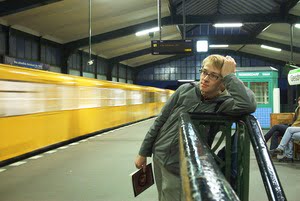The Bundestag, as a political body, is of course the German parliament of the Federal Republic of Germany. The Reichstag building in which it resides, originally constructed in 1894 by the Kaiser to house the parliament of the German Empire, has a longer and more troubled history. Dedicated to “Dem Deutschen Volke” (to the German people), it carries with it a symbolic quality that reaches far beyond the borders of Germany.
The construction of the building began after the Franco-Prussian War in 1871. Prussia’s victory in this conflict altered the balance of power that had been established with the Congress of Vienna after the era of the Napoleonic Wars and established a militaristic Germany as the main power in Europe. France’s defeat created an atmosphere of vengeance in that country which would ultimately lead to World War I. And the Reichstag, in its original structure, symbolizes this age.
Due to various problems concerning the acquisition of property and formal arguments between Bismarck and Wilhelm I as to precisely how the building should be constructed, the actual building did not begin until 1884. And before the Reichstag could be completed in 1994, Kaiser Wilhelm I had died and his successor, Wilhelm II objected to having a parliament at all. The building itself, however, was acclaimed to be an architectural masterpiece. This was primarily due to its famous cupola made of steel and glass, a great technical breakthrough at that time.
Kaiser Wilhelm II abdicated after World War I and ushered in the revolutionary period of 1918. A German republic was proclaimed from a Reichstag balcony by Philipp Scheidemann and the building continued to serve as the seat of parliament during the eventful period of the Weimar Republic.
This ended on January 30, 1933 after Adolf Hitler was appointed Reichskanzler. The infamous Reichstag fire soon followed on February 27, 1933. Under circumstances unclear to this day, the fire appears to have been laid by an unemployed communist bricklayer from Holland. Hitler, needing a two-thirds majority to obtain the so-called Enabling Act, could now use this event as a pretext to ban the Communist Party. By doing this, and by bribing the remaining parties, he was able to get the majority he needed and the Enabling Act was passed. This gave him the right to rule be decree and he wasted no time in suspending most civil liberties. The rest, as they say, is history.
During the 12 years of the Third Reich, the Reichstag building was not used for parliamentary sessions at all. Heavily damaged after the fire, it was used for propaganda presentations and military purposes. Thought was even given to turning it into a Flak Tower, but nothing became of this. It was further damaged by air raids and, strangely, became the central target for the invading Red Army although it served no political purpose at this time. The famous photo of Soviet soldiers hoisting their flag upon one of the towers was staged a few days after the soldiers had first entered the building. And visitors can still find Russian graffiti here and there which was discovered and then preserved during the reconstruction work after the reunification.
When the Cold War “broke out” in earnest, the Reichstag found itself within the borders of West Berlin. A huge crowd of Berliners assembled before the building in 1948 to hear their famous Mayor Ernst Reuter implore the world to “look upon this city!” Merely a few yards away from the East Berlin border, it was also here in 1961 that the construction of the Berlin Wall began.
But being that the West German government capital had moved to Bonn in 1949, the Reichstag played no important political role during the Cold War period. It was reconstructed, without its famous cupola, but merely served as a venue for a permanent exhibition about German history and an occasional representative meeting.
All of this was to change after the fall of The Wall and German reunification. The official reunification ceremony was held before the building on October 3, 1990 and the parliament of a united Germany symbolically assembled inside on the following day. Berlin’s role in the new Germany had yet to be determined, however, and it was only after years of fierce debate that a slim majority decided in 1991 to move the German capital back to Berlin.
The following year, Sir Norman Foster won the architectural contest for reconstructing the Reichstag. Foster’s Reichstag has reintroduced a magnificent glass cupola from which the circular parliamentary chamber can be seen from outside through its glass walls. A huge, mirrored, cone-shaped object rises into the glass dome above. There is a public restaurant on the roof and a viewing platform at the top with a magnificent view of Berlin.
But before the building’s reconstruction actually began, the Reichstag was “wrapped” by the famous artis Christo and his wife Jean-Claude in 1995. Christo saw and sees the Reichstag to hold ground “in an open, strangely metaphysical area.” Despite its turbulent and rather ambiguous history, or maybe because of it, “it has remained a symbol of Democracy… and for this period of two weeks, the richness of the silvery fabric, shaped by the blue ropes, created a sumptuous flow of vertical folds highlighting the features and proportions of the imposing structure, revealing the essence of the Reichstag.”
One may or may not have agreed with this upon admiring his work, but the Reichstag’s symbolic power undoubtedly remains very powerful to this very day, wrapped up or not.


